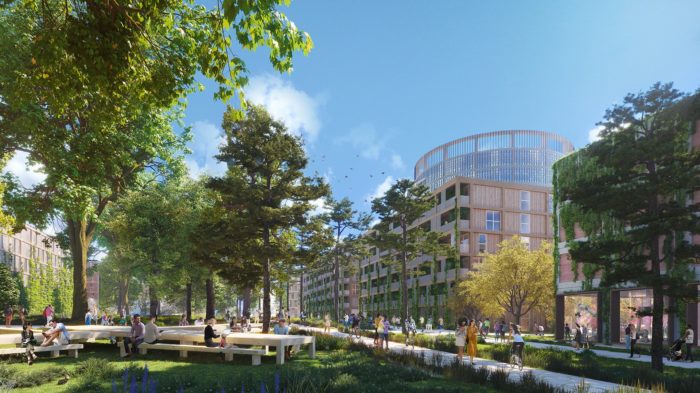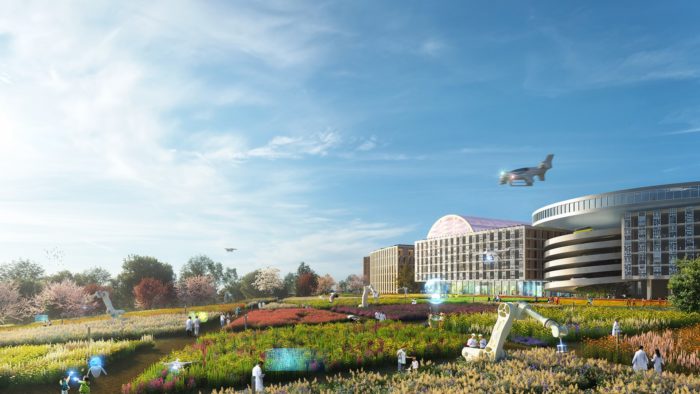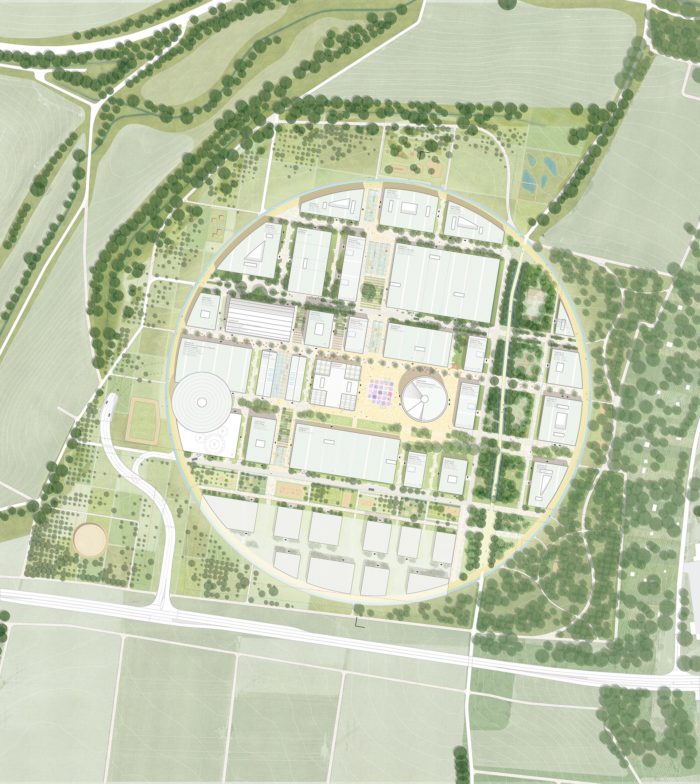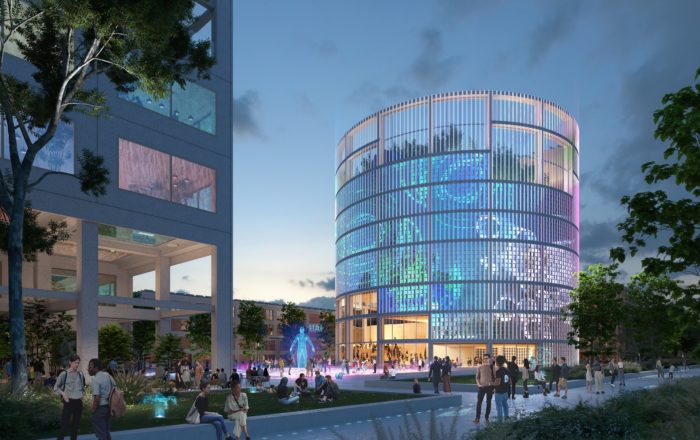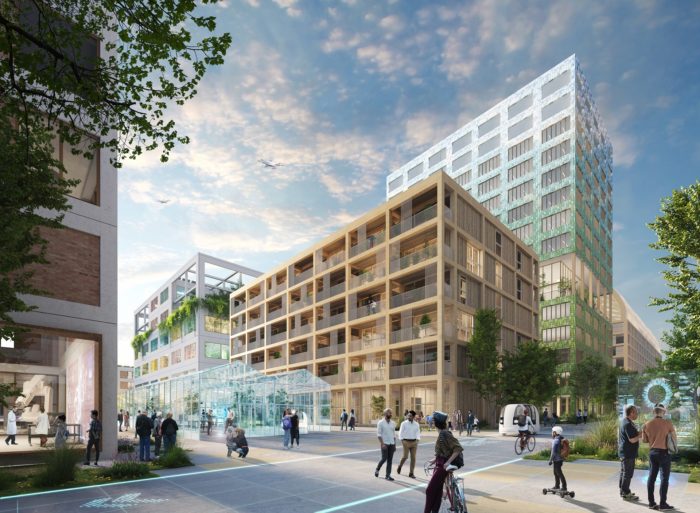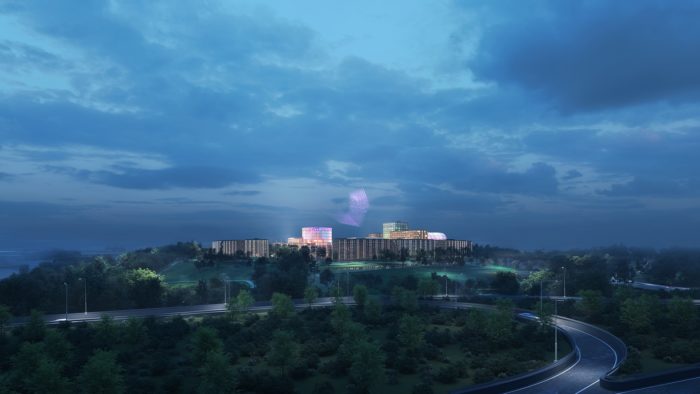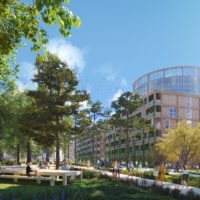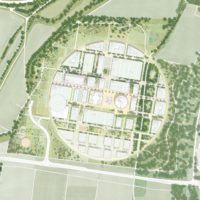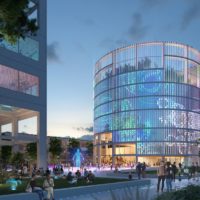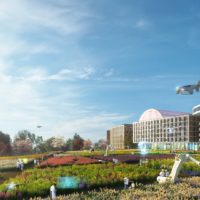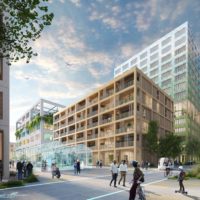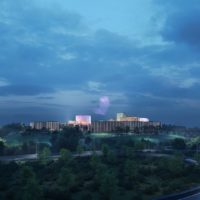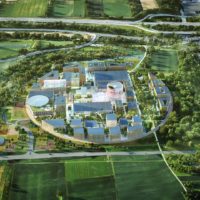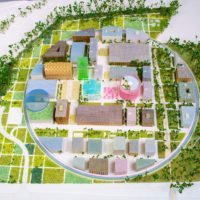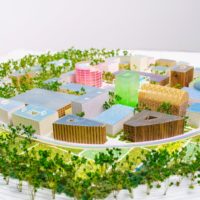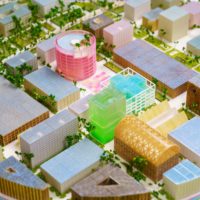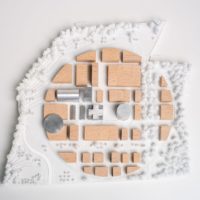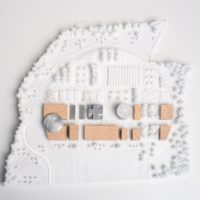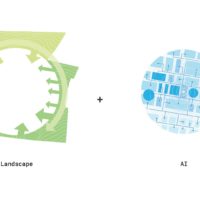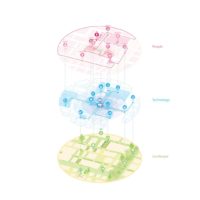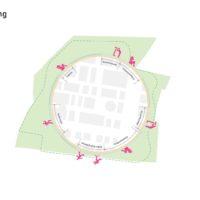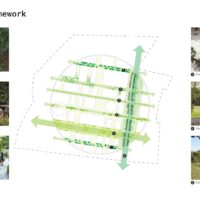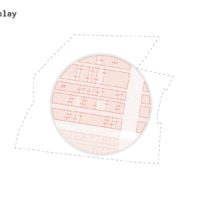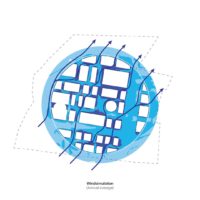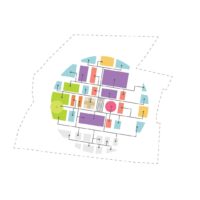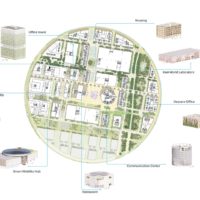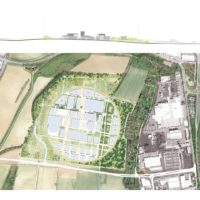MVRDV won the Heilbronn Innovation Park Artificial Intelligence (Ipai) design challenge. A mix of a business campus, research facilities, a start-up innovation center, dwellings, a communication center, and services like a restaurant and preschool make the campus a desirable location to work and an appealing spot for those seeking to witness the invention of world-changing technologies, communicate with the people behind them, and learn about their desires. The circular shape aims to make the campus a global leader in AI technology development.
“With this layout, we’ve made a compact campus where people from all areas of life can learn about the latest advancements in artificial intelligence. The striking architecture of the campus has the potential to catapult it onto the global stage, making it more attractive to top-tier professionals from around the globe. Furthermore, the inviting and exciting environment, and even the identifiable design, make this place a location where people can interact with the future of this kind of technology.” Jacob van Rijs, a co-founder of MVRDV, explains.
Heilbronn’s Innovation Park Artificial Intelligence Design
A group spearheaded by the city of Heilbronn, Germany, and the Dieter Schwarz Foundation commissioned the master plan’s creation. The goal of MVRDV’s design was to build a campus that could stand shoulder to shoulder with the most illustrious campuses in the world, from Silicon Valley to Shenzhen.
The Innovation Park Artificial Intelligence Campus will be easily identifiable thanks to the choice to encircle the master plan’s buildings in a circle, acting as an emblem that elevates its image globally and is visible even in satellite photos.
Most of the buildings in the Innovation Park Artificial Intelligence have uniform heights of 27 meters and simple rectangular shapes, making them adequate to create with modular grids and materials made from renewable resources.
Several outliers characterize the plan’s core, each with its distinctive typology, distinctive shape, and elevated status above the rest of the campus. The communications center is the most notable of these features; it is a circular tower located on the plaza at the plan’s core and serves as a gateway for the public to engage with the campus’s activities through venues for public gatherings, exhibits, meetings, a visitor center, and a training center.
Together with Berlin-based experts in placemaking, REALACE, MVRDV conceived of the programming for these areas that would encourage the public to get involved with AI.
Baden-Württemberg’s Minister of Economics, Labor, Affairs, and Tourism, Dr. Nicole Hoffmeister-Kraut, explains, “Innovation needs space; the architects’ spectacular execution of this idea has left me in awe. Baden-Württemberg’s ambition to become a global leader in commercializing morally responsible AI will receive a significant boost from the Innovation Park Artificial Intelligence.
Because of its compact layout, LOLA was able to use generative landscaping layouts to highlight the area’s already impressive natural assets at the Innovation Park Artificial Intelligence campus. Consequently, forests, farms, and grasslands will be planted in an area of Heilbronn that is presently grassland to act as test beds for ecological and agriculture-related AI technology.
These eco-features are integral to the master plan that helps reduce the Innovation Park Artificial Intelligence campus’s carbon impact by storing substantial amounts of carbon.
The campus will use roughly 80% less energy when fully operational than comparable educational institutions elsewhere. The complex uses renewable energy generated on-site by windmills and sunlight from solar cells. It is kept in batteries and underground climate-controlled storage to save its energy needs to a minimum.
Considering the carbon sequestered by the landscape through regrowth and the carbon stored in the buildings, the plan is estimated to be carbon neutral over its entire lifetime.
The Dieter Schwarz Foundation, the City of Heilbronn, and the Schwarz Group are members of the Ipai Consortium, and they commissioned MVRDV to create the Innovation Park for Artificial Intelligence. Thornton Tomasetti, Studio Animal-Aided Design, REALACE, Peutz Consult, and Gruner Deutschland worked on the concept with LOLA Landscape Architects.
- ©MVRDV
- Site Plan ©MVRDV / LOLA
- ©MVRDV
- ©MVRDV
- ©MVRDV
- ©MVRDV
- ©MVRDV
- Model by: Made by Mistake. ©Ivo Haarman
- Model by: Made by Mistake. ©Ivo Haarman
- Model by: Made by Mistake. ©Ivo Haarman
- Model by: Made by Mistake. ©Ivo Haarman
- Model by: Made by Mistake. ©Ivo Haarman
- ©MVRDV
- ©MVRDV
- ©MVRDV
- ©MVRDV
- ©MVRDV
- ©MVRDV
- ©MVRDV
- ©MVRDV
- ©MVRDV


